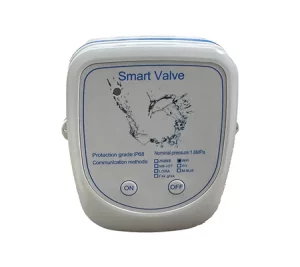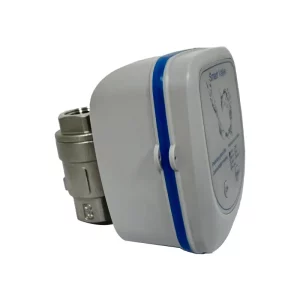Avoid your inquiry is delay response, please enter your WhatsApp/WeChat/Skype along with the message, so we can contact you at the very first time
We will reply you within 24 hours. If for urgent case, please add WhatsApp: +8613188899036, or WeChat: 0531-87968777. Or call 0531-87968777 directly.
* We respect your confidentiality and all information are protected. We will only use your information to respond to your inquiry and will never send unsolicited emails or promotional messages.
The Essential Guide to Modern Valve, Actuator & Fluid Control Solutions
Outdated valve setups lead to leaks, water damage, and mounting maintenance costs. Delayed response and manual operation risk both your workflow and your budget. Upgrading to a smart valve system delivers instant alerts, precision control, and robust automation—ending your worries for good.
The main types of smart valves include motorized ball valves, solenoid shut-off valves, proportional control valves, and integrated smart actuators. Each type leverages sensors and connectivity for real-time control, leak detection, and efficient fluid or gas management in industrial and building automation systems.

WiFi Smart Valve
A smart valve isn’t just a pipe-fitter’s tool—it’s the nerve center for fluid and gas control. These advanced valves are designed to monitor and control the flow rate of liquids or gases, using a combination of built-in actuators, sensors, and programmable controllers.
Smart valves offer seamless integration into existing systems, using protocols like Modbus, BACnet, or IoT wireless platforms. This means your team can monitor and control valves remotely and respond instantly to changes, reducing downtime and improving safety.
“Integrating smart valves cut our facility’s water loss by 40% within six months.”
— Facility Maintenance Director, global pharma plant
Table: Key Features of Modern Smart Valves
| Feature | Benefit |
|---|---|
| Real-time leak detection | Stops damage before it starts |
| Remote control | Adjust valve position from anywhere |
| Predictive maintenance | Alerts reduce unplanned shutdowns |
| IoT compatibility | Easily connects to modern control systems |
| Precise flow regulation | Maintains process quality, saves energy and water |
Understanding the different types of smart valves is critical for selecting the right solution. Here are the most common types in industrial and building automation:
1. Motorized Ball Valves
These are the most popular for quick shut-off or open/close applications. A robust actuator motorizes the rotation, offering fast response and high reliability, especially for automatic water control and leak prevention.
Example: Electric ball valve for industrial water systems
2. Solenoid Valves
Solenoid valves use an electromagnetic actuator for ultra-fast operation. They excel in emergency water or gas shut-off and remote systems where every second matters.
3. Proportional Control Valves
These allow precise, variable flow control—ideal for HVAC, chemical dosing, or process lines needing exact fluid management systems.
4. Smart Water Valves
Designed for building and municipal water management, these valves combine flow meters, sensors, and programmable logic to optimize consumption, detect leaks, and avoid water damage.
5. Smart Actuators
Stand-alone devices that can be fitted to almost any type of valve (butterfly, gate, globe). They provide automatic control and feedback, turning legacy valves into modern IoT endpoints.
Table: Smart Valve Types, Applications, and Response Time
| Valve Type | Typical Application | Response Time |
|---|---|---|
| Motorized Ball Valve | Automatic water shut-off, HVAC | < 1 second |
| Solenoid Valve | Emergency gas/water shut-off | 20–100 ms |
| Proportional Control | Flow management, dosing | 1–2 seconds |
| Smart Water Valve | Leak detection, consumption control | 1–3 seconds |
Related reading: Learn about modular actuator technology for retrofits and how it brings new life to your existing valves.
Modern valve systems must fit seamlessly into BMS and IoT environments for maximum efficiency and oversight.
Case Example:
A large hotel in Singapore installed IoT-compatible smart valves and cut water usage by 17% in the first year. Their BMS now receives instant alerts for leaks or abnormal flow, allowing staff to take action before costly damage occurs.
“Thanks to our IoT valve upgrade, we have real-time visibility into every pipe, from rooftop tanks to basement chillers.”
— Chief Engineer, five-star hotel

smart valve
Smart valves are designed to solve challenges in a wide range of sectors:
[See how a leading utility cut downtime with automatic control valves in district cooling](YOUR_INTERNAL_LINK_HERE).
Case Study Table: Smart Valve Impact by Industry
| Industry | Key Challenge | Smart Valve Solution | Outcome |
|---|---|---|---|
| Commercial Real Estate | Water leaks, insurance claims | Wireless smart water valves with sensors | 60% reduction in water damage |
| Pharma Manufacturing | Process variability | Proportional control valve with feedback | 28% less batch rejection |
| Data Centers | Cooling uptime | High-speed actuator for chilled-water loop | Zero unplanned downtime |
Sensors are the “eyes and ears” of any smart valve system. Strategically placed, they continuously monitor and control:
Controllers process sensor data, sending real-time signals to the actuator for instant opening and closing or variable modulation. The result is precision control, allowing the system to regulate the flow to the exact requirement, adapt to process changes, and detect leaks before disaster strikes.
Example:
A programmable smart actuator used in a European brewery saved €50,000 annually by eliminating overflows and waste, thanks to automated flow control based on real-time sensor feedback.
“Now, a single valve can detect leaks and automatically shut off the line, all without human intervention.”
Let’s break down the different types of smart valves and their unique roles:
Ball Valves
Motorized ball valves excel in high-flow, low-resistance settings like water mains, HVAC zones, and industrial shut-off points.
Solenoid Valves
Best for automatic water and gas shut-off—where milliseconds count.
Control Valves
These offer precise control over fluid flow and are common in chemical dosing, process control, and water treatment.
Smart Actuators (Retrofit)
Turn any traditional valve into a smart device—saving on replacement costs and reducing the need for maintenance.
Table: Summary of Valve Types and Smart Features
| Valve Type | Flow Media | Smart Features | Typical Use Case |
|---|---|---|---|
| Ball Valve | Water, gas | Fast, programmable actuator | HVAC, water distribution, process |
| Solenoid Valve | Liquid, gas | Instant shut-off, remote | Safety, emergency control |
| Control Valve | Liquid | Variable modulation, feedback | Dosing, filtration, blending |
| Smart Actuator | All | IoT retrofit, predictive maintenance | Any legacy valve |
Step-by-step guide:
“Upgrading to smart valves reduced our maintenance visits by half and let us respond to issues before tenants even noticed them.”
— Commercial Property Manager
Smart Valve Maintenance Checklist:
Background:
A high-rise office tower in Singapore suffered repeated water damage due to undetected leaks, resulting in $120,000 in repair costs and frequent insurance claims. Manual checks missed small leaks, and response time was slow.
Solution:
The facility management team partnered with a leading smart valve manufacturer to install a network of smart water valves equipped with real-time leak detection sensors, remote controllers, and automated alerts. All devices were integrated with their BMS for instant action.
Outcome:
Initial Costs:
Operational Savings:
Return on Investment Table
| Benefit Area | Savings / Year (avg) | Notes |
|---|---|---|
| Water/gas savings | $3,000–$25,000 | Based on building/plant size |
| Maintenance callouts | $1,000–$7,000 | Labor and parts |
| Insurance premium drop | $1,200–$9,000 | Leak detection credits |
| Equipment replacement | $2,000–$10,000 | Fewer unplanned failures |
| Total ROI | 30%–70% | Payback in 12–24 months |
How do smart valves detect leaks and prevent water damage?
Smart valves use built-in sensors to monitor water flow and pressure. If a sudden change indicates a leak, the controller sends an alert and automatically triggers the actuator to close the valve, preventing costly damage.
Are smart valves compatible with all control systems?
Most new smart valves are designed with open protocols like BACnet, Modbus, Zigbee, or Wi-Fi, ensuring seamless compatibility and easy integration with building and industrial automation systems.
What maintenance is required for smart valves?
Routine visual inspection every 6–12 months, checking actuator function, updating firmware, and verifying sensor calibration. Built-in analytics will alert you to abnormal operation before a failure occurs.
Can existing valves be upgraded to smart?
Yes. Many manufacturers offer smart actuators that retrofit to standard ISO flanges or stems. This lets you keep your existing piping while gaining all the benefits of automation, leak detection, and remote control.
How do smart valves support predictive maintenance?
Valves log every opening, closing, and torque event, creating a digital service record. Predictive algorithms flag trends that signal wear or buildup, allowing maintenance before problems cause downtime.
What industries benefit most from smart valves?
Any operation where water, gas, or liquid control is critical—commercial buildings, manufacturing, pharma, food, and utilities—can achieve cost savings, reduce risk, and improve operational efficiency.
Thinking about your next automation upgrade? Our engineering team is ready to help you select, size, and install the ideal smart valve solution—backed by global support and expertise.